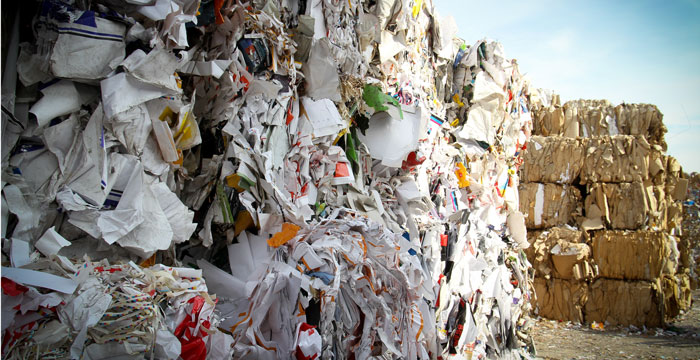
Recycling in Philadelphia: How our single-stream system works
If you’re a resident of the Philadelphia area, it’s probably old news to you that this city has a trash problem. So, when it does get picked up, where does all the garbage go, anyway?
The Problem
Residents of Philadelphia have been complaining about trash for over 150 years. Complaints to the city’s 311 system for reporting illegal dumping have skyrocketed to 50,204 reports in 2017. The civic government tries to manage the issue with a combination of enforcement, education, and drop-off centers
Garbage goes to a landfill in the surrounding
WHERE DOES ALL THE RECYCLING GO?
Materials recovery facilities, or MRFs, are key players in many single-stream recycling programs. Over the past twenty years, many cities, including Philadelphia, have switched to this kind of system for recycling collection.
Single-stream systems, also known as fully commingled, allows for all paper fibers, plastics, metals, and other recyclable materials to be mixed in a collection truck, instead of being sorted by the user at home.
In a single-stream system, the collection and processing steps are designed to handle a mix of recyclables. This is because all the separating happens at a MRF through a combination of equipment and manual labor.
At facilities like Waste Management and the Recommunity Recycling center in Philadelphia, hundreds of tons of recyclables are sorted through every day.
Collection trucks arrive at MRFs with neighborhoods worth of recyclables, where they dump the commingled material onto the tipping floor. A front end loader or other bulk material handling equipment then drops into a large steel bin at the start of the processing line.
That bin is used to feed the materials onto a conveyor, while also regulating the density of the material on the conveyor, so that it is not packed too tightly together.
Materials will go through a pre-sort, which is always handled by employees of MRFs.
These employees quickly sort through the conveyor, removing trash or contaminated items from the processing line. The items that are removed will ultimately end up in the landfill.
Pieces of recycling are then sorted by size through a machine that uses sorting disks, turning on axels. As materials are separated, they are diverted to separate conveyors for baling. Large bales of recycled materials are then sent out to the global market. A large amount of the world’s recycling ends up in China, where it is sold for repurposing.

Unfortunately, like all systems run by human beings, we get things wrong. We don’t sort properly, contaminating loads and clogging sorting equipment. Nations like China, which, until recently took much of our recycling, are now enacting stricter standards, forcing us to keep much of our recycling at home. In just a few short years, Philadelphia has gone from making a profit on recycling loads, to having to pay for them to be taken.
It comes to down to two main issues: sorting and contamination.
Poorly sorted loads tend to include a lot of plastic bags in recycling, which clogs sorting equipment. Conversely, the city sanitation website Philadelphia Streets estimates that 60% of garbage actually consists of recyclable paper products.
Contaminated loads usually include biomatter like food waste. Recipient countries like China tolerate far less of this contamination than they used to, resulting in increased expense for disposal.
Why it’s still important to pay attention to what’s in your bin
While Philadelphia operates on a single stream recycling system, meaning you no longer have to sort your recyclables into separate groups, it’s still important to pay attention to what goes in your bin.
So much waste is created by contaminated items ending up in the recycling. Even though an item is recyclable, if it has food waste on it, it may compromise itself and hundreds of other pieces from being recycled.
As reported by The Inquirer, as much as one-fifth of each load that comes out of Philadelphia’s recycling center might be contaminated.
The contaminated recycling ends up in going to the landfill, which means 20 percent of the recycling that gets brought into the Recommunity Recycling center goes to landfills due to contamination from non-recyclables.
What Can I Do?
Obviously sorting recycling properly and attempting to reduce trash through reusable containers, cloth diapers, and composting are all effective personal steps. The city has made it easier to get rid of problem items like oversized trash and lawn waste by setting up Sanitation Convenience Centers for drop-off. And, you can explore ways to recycle and reuse other items like second-hand clothing, pots and pans, and electronics through visiting websites like the Green Philly Blog.
A peanut butter jar that’s not washed out, a greasy pizza box or wet papers are all considered compromised. It’s important to know for sure that the items themselves are recyclable too. Plastic bags are often mistaken for being recyclable in Philadelphia, but they aren’t. If you’re not sure you can consult our guide for recycling in the city.









